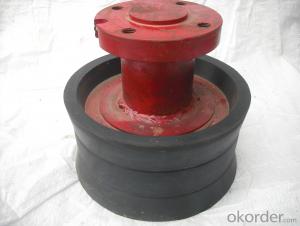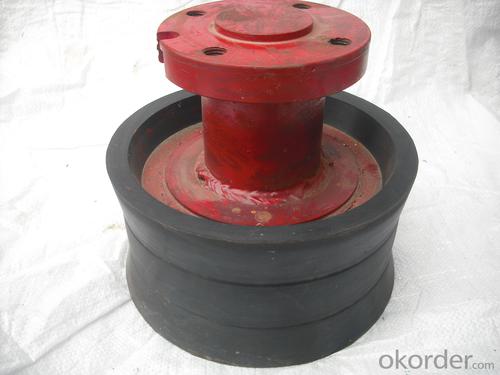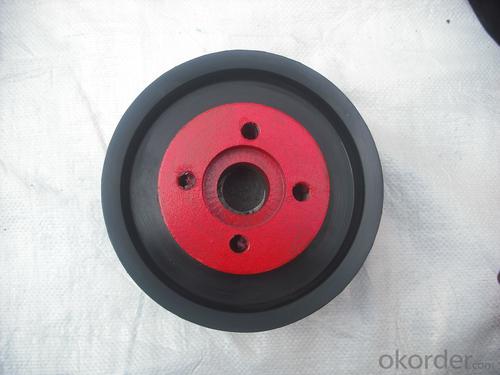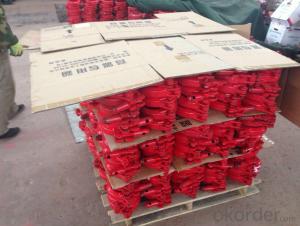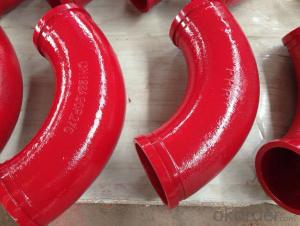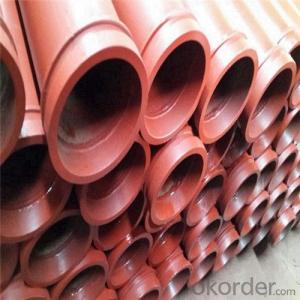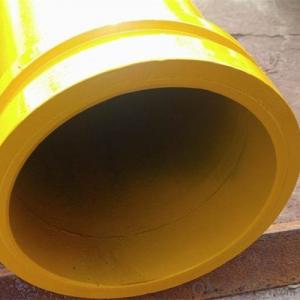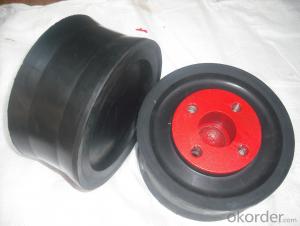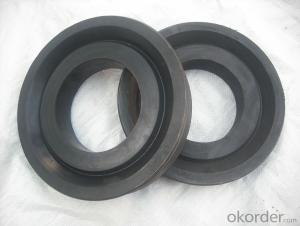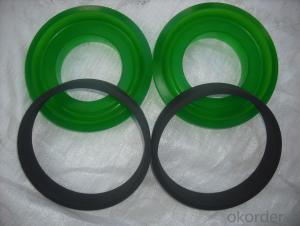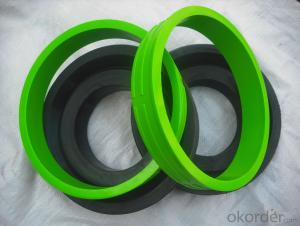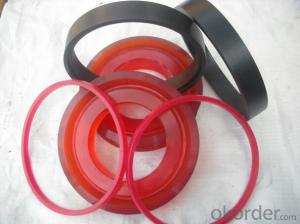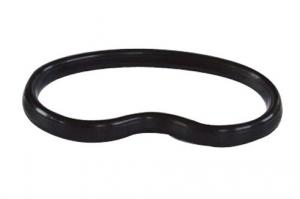ZOOMLION RUBBER PISTON DN180 WITH HIGH QUALITY
- Loading Port:
- Tianjin
- Payment Terms:
- TT OR LC
- Min Order Qty:
- 5 set
- Supply Capability:
- 500 set/month
OKorder Service Pledge
OKorder Financial Service
You Might Also Like
ZOOMLION RUBBER PISTON DN180 WITH HIGH QUALITY
Schwing/ Sany/PM/Zoomlion concrete pump rubber piston
name | Concrete pump piston |
size | DN200 for Schwing DN230 for Schwing DN200 for PM entirety piston DN230 for PM entirety piston DN180 for Zoomlion piston DN200 for Zoomlion piston DN220 for Zoomlion piston DN230 for Zoomlion piston DN180 for Sany piston DN195 for Sany piston DN200 for Sany piston DN230 for Sany piston DN260 for Sany piston DN280 for Sany piston Other sizes and types upon request |
Material | PUR Polyurethane,natural rubber |
Applacation | Used in concrete pump truck,concrete pump,Hydrulic ram system in Construction work equipment
|
Serving brands of mounted truck concrete pump and concrete pump | Sany ,PM, Zoomlion,Schwing,CIFA and so on |
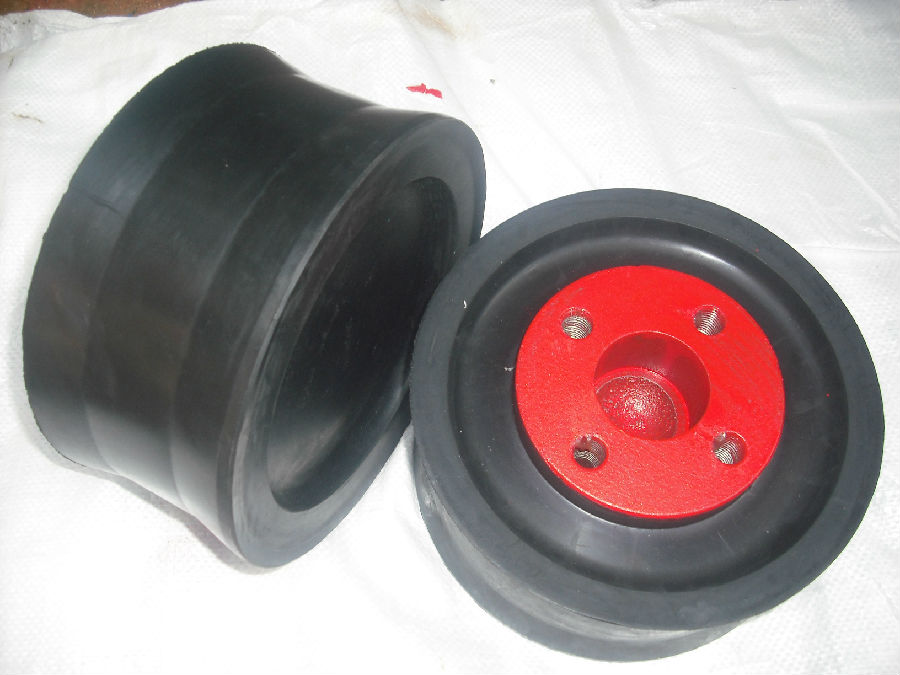
- Q: How often should concrete pump hydraulic filters be inspected and replaced?
- Concrete pump hydraulic filters should be inspected and replaced on a regular basis, ideally every 500 hours of operation or according to the manufacturer's recommendations. Regular inspection and replacement of hydraulic filters help ensure the proper functioning and longevity of the concrete pump.
- Q: What are the consequences of using substandard concrete pump spare parts?
- Using substandard concrete pump spare parts can have several consequences. Firstly, substandard parts may not fit properly or be of the same quality as the original parts. This can lead to a decrease in the overall performance and efficiency of the concrete pump. The pump may not be able to deliver the required amount of concrete or may experience frequent breakdowns, resulting in project delays and increased costs. Secondly, substandard parts may have a shorter lifespan compared to genuine parts. This means that they may wear out or break down sooner, requiring more frequent replacements. This not only adds to the maintenance costs but also increases the risk of unexpected equipment failures during operation, which can be dangerous to the workers and potentially cause accidents. Furthermore, using substandard parts can compromise the safety of the concrete pump. Genuine parts are designed and manufactured to meet strict quality standards and ensure the proper functioning of the equipment. Substandard parts, on the other hand, may not undergo the same rigorous testing and quality control measures, making them less reliable and potentially more prone to failure. This can pose a serious risk to the operators and other personnel working in the vicinity of the concrete pump. Additionally, using substandard parts can also void any warranties or guarantees provided by the manufacturer. Manufacturers typically offer warranties on their products to ensure customer satisfaction and provide support in case of any issues. However, if substandard parts are used, the manufacturer may refuse to honor the warranty, leaving the owner responsible for any repairs or replacements needed. In summary, using substandard concrete pump spare parts can result in decreased performance, increased maintenance costs, higher risks of accidents, and the voiding of warranties. It is crucial to always use genuine parts that are specifically designed for the concrete pump to ensure its optimal performance, longevity, and safety.
- Q: Can I get spare parts for both concrete pumps with and without boom stabilizers?
- Yes, you can get spare parts for both concrete pumps with and without boom stabilizers.
- Q: What are the most commonly replaced spare parts for concrete pumps?
- Concrete pumps commonly require the replacement of certain spare parts. These parts, including wear plates, wear rings, and delivery cylinders, are prone to constant abrasion and wear. This is a result of the high pressures and velocities involved in the movement of concrete. Wear plates, usually made from hardened steel, are installed in high-wear areas such as the hopper to protect against the abrasive nature of concrete. On the other hand, wear rings, made from durable materials like polyurethane, are utilized to minimize friction between the piston and cylinder, thereby reducing wear and maintaining optimal performance. Additionally, delivery cylinders, also known as pumping cylinders, play a crucial role in transferring concrete from the hopper to the discharge outlet. Over time, the interior surface of the cylinder may experience wear or damage, necessitating replacement to ensure efficient concrete flow. Other commonly replaced spare parts include pistons, seals, hydraulic hoses, and couplings. These components, too, undergo wear and tear during the pumping process. It is essential to regularly inspect and maintain these parts to prevent unexpected equipment downtime and ensure the long-term reliability and performance of concrete pumps.
- Q: How can a faulty boom affect the concrete placement process?
- The concrete placement process can be significantly affected by a faulty boom. Firstly, the safety of the workers involved may be compromised. When the boom is not functioning properly, it may not be able to handle the weight and pressure exerted by the concrete, which can lead to potential collapse or failure. This endangers the lives of the workers at the site. Secondly, inaccurate and uneven concrete placement can result from a faulty boom. Malfunctioning parts of the boom can cause the concrete to be discharged at incorrect angles or distances, leading to uneven distribution and an inconsistent concrete surface. This, in turn, can impact the structural integrity and aesthetics of the final product. Furthermore, delays and disruptions in the concrete placement process can occur due to a faulty boom. If the boom breaks down or malfunctions during operation, it will require repairs or replacement, causing downtime and potentially halting the construction work. Consequently, project delays, increased costs, and overall inefficiency can arise. Lastly, wastage of concrete can result from a faulty boom. When the boom is not functioning properly, it may fail to control the flow and discharge of the concrete accurately. This can lead to spills, overflows, or excessive pouring, resulting in unnecessary wastage of concrete material. Not only does this increase project costs, but it also has environmental implications. In conclusion, a faulty boom can have severe consequences on the safety, accuracy, efficiency, and cost-effectiveness of the concrete placement process. Regular inspections, proper maintenance, and prompt repairs are crucial to mitigate any potential risks and ensure smooth concrete placement operations.
- Q: How much is the pump for a month?
- Depends on you are a big pump, small pump, and now about 0.7 of the fuel consumption, and you do a month how much work, generally, if you do 10000 square a month, then two years to recover costs
- Q: How often should concrete pump seals be replaced?
- Concrete pump seals should be replaced every 500 to 800 hours of operation or whenever signs of wear, leakage, or decreased performance are observed.
- Q: Can I get spare parts for both single-cylinder and multi-cylinder concrete pumps?
- Spare parts for both single-cylinder and multi-cylinder concrete pumps are readily available. Various manufacturers and suppliers offer a wide range of spare parts for different concrete pump types, including single-cylinder and multi-cylinder models. These spare parts comprise hydraulic cylinders, pistons, seals, valves, hoses, and other crucial components that may require replacement due to wear and tear or damage. To ensure compatibility and availability, it is vital to contact the concrete pump's specific manufacturer or supplier and inquire about the spare parts suitable for your particular model.
- Q: Can a concrete pump pipe be repaired or should it be replaced?
- Repairing a concrete pump pipe is possible in certain cases, but the ultimate outcome relies on the level of damage and the particular circumstances involved. Specialized techniques like welding or epoxy injections are often sufficient for minor cracks or small areas of damage. However, if the damage is extensive, severe, or jeopardizes the pipe's structural integrity, it may be more practical and safer to replace the entire pipe. Before making a decision between repair or replacement, it is crucial to thoroughly evaluate the condition of the concrete pump pipe. Factors such as the pipe's age, the overall pump condition, and the frequency of use should be taken into account. Consulting a professional or an experienced concrete pump technician is recommended to determine the most suitable course of action. In conclusion, while it is possible to repair a concrete pump pipe, the choice between repair and replacement should be based on factors including the extent of damage, cost-effectiveness, and safety considerations.
- Q: What are the common signs of wear and tear in a concrete pump cylinder?
- Some common signs of wear and tear in a concrete pump cylinder include: 1. Leaking oil or hydraulic fluid: If you notice oil or hydraulic fluid leaking from the cylinder, it is a clear sign of damage or wear. This can be caused by cracks, worn seals, or damaged gaskets. 2. Reduced pumping efficiency: A worn cylinder may result in decreased pumping efficiency, meaning the concrete pump may not be able to deliver the same amount of concrete as before. This can be due to a decrease in the cylinder's internal diameter or worn piston rings. 3. Increased noise and vibration: As the cylinder wears down, it may create more noise and vibration during operation. This can indicate misalignment, loose components, or damaged internal parts. 4. Rough or uneven concrete output: A worn cylinder can lead to a rough or uneven output of concrete. This can be caused by an irregular internal surface or damaged piston rings, affecting the smooth movement of the piston. 5. Excessive heat generation: If the concrete pump cylinder is worn, it may generate more heat during operation. This can be caused by increased friction between moving parts, which can further contribute to accelerated wear and tear. 6. Visible damage or corrosion: Inspecting the surface of the cylinder can reveal visible signs of wear and tear, such as scratches, dents, or corrosion. These damages can compromise the integrity of the cylinder and may require repair or replacement. It is important to regularly inspect the concrete pump cylinder and address any signs of wear and tear promptly to avoid further damage and ensure the pump's optimal performance.
Send your message to us
ZOOMLION RUBBER PISTON DN180 WITH HIGH QUALITY
- Loading Port:
- Tianjin
- Payment Terms:
- TT OR LC
- Min Order Qty:
- 5 set
- Supply Capability:
- 500 set/month
OKorder Service Pledge
OKorder Financial Service
Similar products
Hot products
Hot Searches
Related keywords
